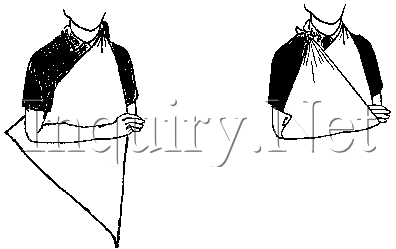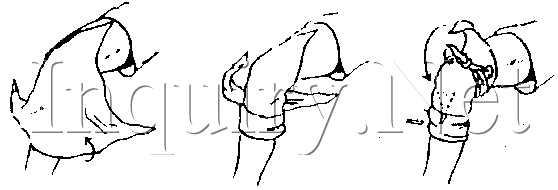Uses of a Triangular Bandage
Triangular bandages have many uses. If you do not have a proper one in your first aid kit, you may use your neckerchief.

To make a large arm sling spread the bandage, as shown above, down the front of the victim's body. Carry one end over the shoulder on the uninjured side and bring it around behind the neck so that the end just hangs over in front on the injured side. Carefully place the bandage point behind the elbow, and gently bend the arm across the center of the bandage. Bring up the second end and tie to the end at the shoulder, making the knot (use a square knot) at the side of the neck, not behind.
The sling when it is completed should support the arm so that the little finger is slightly above the elbow. Finish it off by bringing the point forward around the elbow, and fasten it with a safety pin.

The correct way of bandaging a wound on the foot.

The triangular bandage used for head wounds.

The triangular bandage used for knee injuries.
Foot, head, and knee bandages are intended as a method of covering a dressing only, and should not be used by themselves.

Triangular bandages can also be folded and used to keep a dressing in place.
